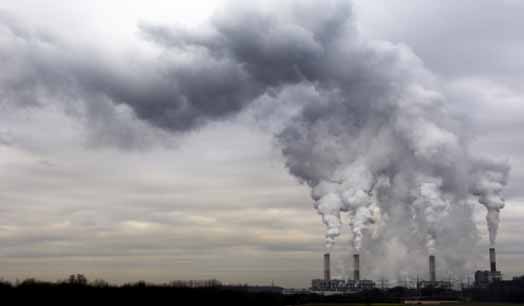Domestic Energy Resources

Although coal is our most abundant energy resource we now understand that coal, although inexpensive, is a poor choice of fuel because it contributes large amount of pollutants such as CO2, NOx, mercury and sulfur when burned. Coal is not very useful as a fuel for your vehicle. However, it will indirectly fuel electric vehicles. Our second most abundant fossil fuel, natural gas, burns with 75% lower NOx and 50% lower CO2 when used to generate electricity, and 75% lower NOx and 25% lower CO2 when used as a fuel in vehicles. Natural gas can be converted to the liquid fuel methanol, an excellent fuel. These are ball park numbers, later we will present more detailed results.
Discussion of the relative role of our energy sources is adequately presented in myriad DOE web sites, and the reader is referred to them (see for example http://www.afdc.energy.gov/afdc/fuels/natural_gas.html). What IER wants to concentrate on and spur discussion of is the only fossil fuel that has a renewable counterpart, natural gas. This fuel, while burning much cleaner than coal, or gasoline, is domestically supplied (whether fossil or renewable), in abundant supply as fossil fuel, and by making a national effort to make use of our wastes to generate the renewable version, we can add a major amount to our energy supply while significantly reducing our waste problems, and definitely lowering the CO2 addition we make to the atmosphere. Although it can be used in Internal Combustion Engines directly, by compressing it or liquefying it, it is better utilized by converting it to methanol, which allows a much larger fraction of our existing infrastructure to remain the same, while still getting the benefits of using our natural gas.
Fossil Natural Gas
As recently as 2009, the 'official' view has been that the US is running out of fossil natural gas. However, as insiders new, new technology has enabled vast reserves of formerly unobtainable natural gas to be acquired. The Potential Gas Committee, an organization of geologists long relied upon to make reliable estimates, has this summer 2009, determined that we have 80-100 years of natural gas if we take into account the newly available finds of shale gas. This map give some idea of the vastness of the shale gas reserves in 2005, and the growth in those reserves in 2011 here.
Renewable Natural Gas
Renewable natural gas has two main sources, the portion coming from wastes, municipal, industrial and farm, and a component coming from the anaerobic digestion of cultivated bio-mass. Renewable natural gas will constitute a major component of our energy needs, with essentially a zero carbon footprint. Although the methane burning will release CO2, the methane prevented from entering the atmosphere if the wastes were allowed to decay under controlled conditions and the gases captured, more than compensates for the CO2 from combustion. Furthermore, additional CO2 is taken from the atmosphere by growing the bio-mass. Go to link on Renewable natural gas.
This page is the header page for further investigations of:
North American Oil Supplies and
North American Natural Gas Supplies.

